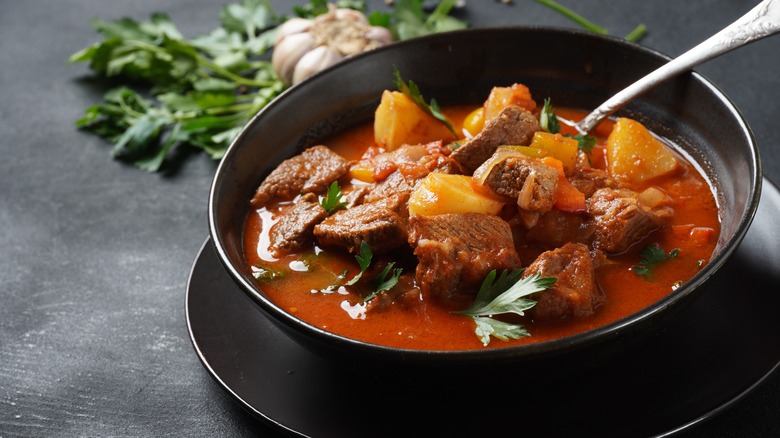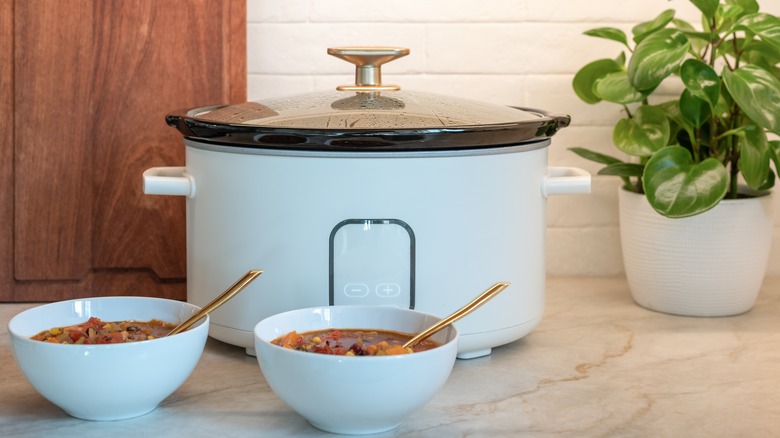The Trick To Thickening Up Slow Cooker Beef Stew
Using your slow cooker to make dinner is an easy way to combine several ingredients and call it a day. Slow cookers are popular for their feasibility and the wonderful flavors and aroma a dish can achieve when cooked this way. Take beef stew, for example. Beef stew is a delicious meal that packs loads of protein and vegetables into one dish and is versatile in its own right. You can't go wrong with it, either cooked as a simple stew or poured over other items like mashed potatoes.
While any dish can be lackluster due to seasoning, texture, or being over- or undercooked, meals cooked in a slow cooker can also be a victim of being too watery. Due to the ingredients or an overabundance of broth or water incorporated in the beginning, sometimes a recipe like beef stew is best with a thicker base. While ingredients in soups are meant to be completely submerged, a stew should be denser, thicker, with more of a focus on protein and vegetables. If you find yourself with a watery stew, simple tricks like puréeing, taking the slow cooker cover off, or creating a slurry will save the day.
How to successfully thicken your stew
Fortunately, you're not confined to using one method to thicken your beef stew. Depending on your preference, there are several ways to achieve this. If your stew is becoming too thin and watery, lift the slow cooker's lid to allow some of the evaporated liquid to escape. When moisture escapes, the stew's liquid organically thickens. You won't have to cook it longer and you won't have to add any other ingredients to the stew.
If the lid trick isn't working, you can try a puréeing method instead. If you have an immersion blender, you can use it directly in the slow cooker to purée. The process will organically thicken your stew as the hearty vegetables and protein ingredients are broken down and mixed with the liquid. (Keep in mind that the longer you use an immersion blender, the more chunks will be broken down and the less stew-like the meal will become.) Using a standalone blender will also work if you'd rather take a portion of the stew out of the slow cooker. Simply blend the ingredients and add them back to the slow cooker with a stir.
Lastly, adding a slurry at the end of the cooking process is another trick to help thicken your liquid. Whisk a bit of flour and water together until it's smooth. When you have 30 to 60 minutes left for the beef stew, add the slurry so the mixture can cook with the remaining ingredients. The result will be a thicker, more robust stew.

